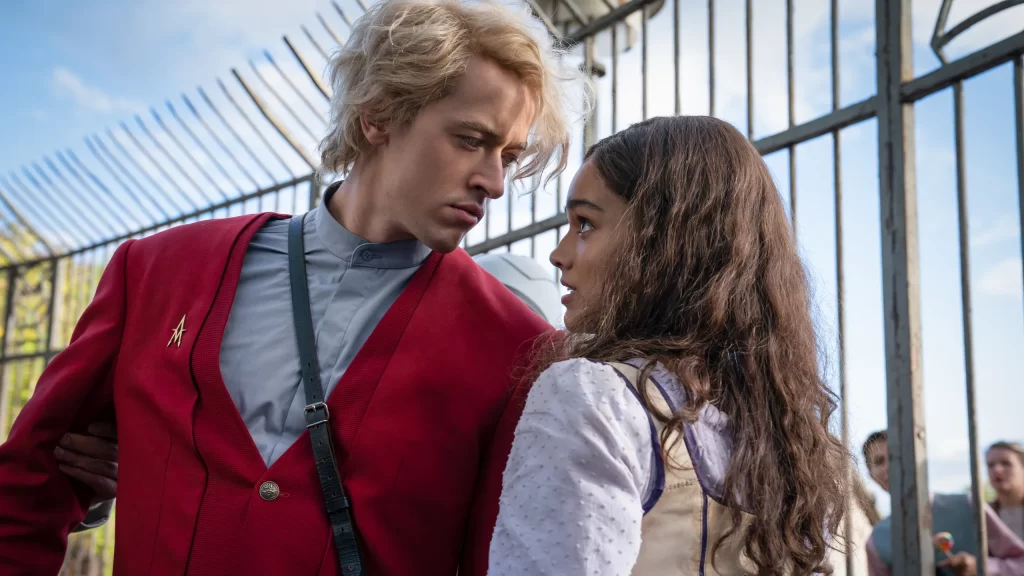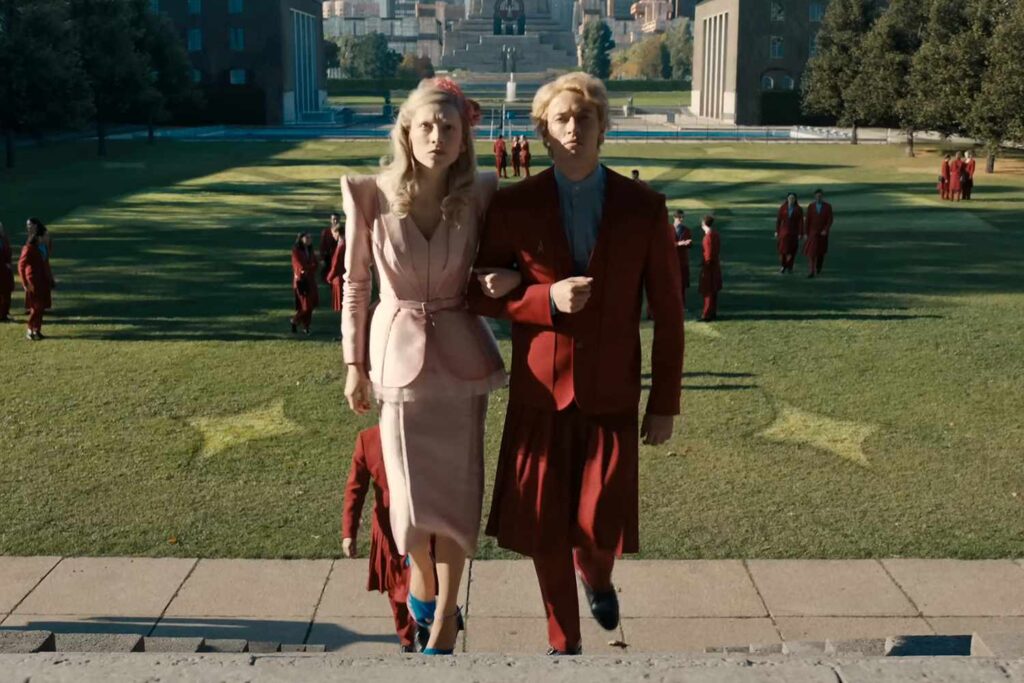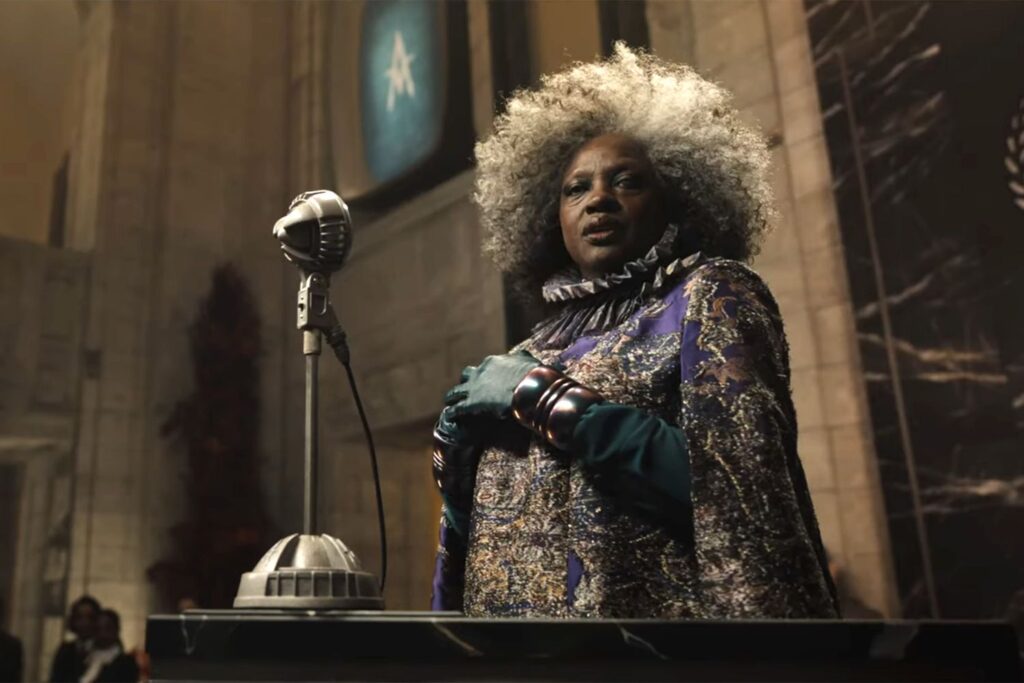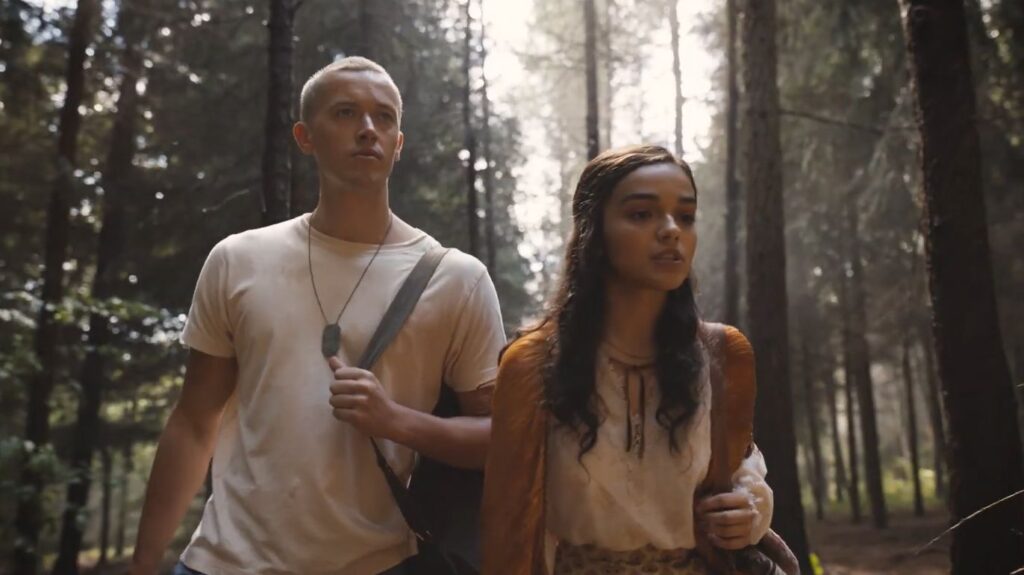
The premise of the Hunger Games franchise—every year, the tyrants of The Capitol conscript two dozen children from the surrounding “districts” for a televised gladiatorial competition designed to continually cow potential rebels into submission—is one of recurrence. So it’s only natural that the series keeps perpetuating itself—first with three sequels (which were pretty good until they cratered), now with a prequel that rewinds 60-odd years and explores the ritual’s genesis. If The Ballad of Songbirds and Snakes reminds us of what we’ve seen before, well, isn’t that the point?
To its credit, this new-old movie, which Francis Lawrence directed from a script by Michael Lesslie and Michael Arndt (adapting Suzanne Collins’ novel), isn’t overly reliant on its own mythology. Sure, there are some throwaway references to surnames like Flickerman and Heavensbee, and I suspect that the initiated will locate plenty more easter eggs in the margins. (When a character uttered the word “katniss,” the teen-heavy audience at my screening buzzed with audible recognition.) For the most part, though, Songbirds and Snakes has its own story to tell, one that is by turns awkward, engaging, clumsy, and commendable. It doesn’t really work, but the ways in which it doesn’t work are strangely satisfying.

What’s interesting about Songbirds and Snakes is what isn’t interesting about it: the Games themselves. Once again, the movie’s lengthy middle section (the narrative is divided into three fairly discrete chapters) unfolds inside an arena, as 24 adolescents scramble to evade, strategize, and kill. Lawrence, no longer working with his namesake Jennifer, showcased a facility for this sort of breathless life-or-death action in Catching Fire, but this time around his heart doesn’t appear to be in it. There are poisoned bottles and claustrophobic air ducts and slithering reptiles, and none of it is executed with any imagination or panache. It feels less like a product of veteran craftsmanship than a trial run.
Which, on a meta level, it is. That’s because the protagonist of Songbirds and Snakes is not a traumatized combatant but one of the many sinister bureaucrats operating behind the scenes, laboring to deliver a reality competition that is both terrifying and telegenic. His name is Coriolanus Snow, and if you’re up on your Panem history, you know that he’ll eventually age into the ironhanded despot portrayed in the original tetralogy by Donald Sutherland. Here he’s a blonde-haired teenager played by Tom Blyth as a smooth-talking, quick-thinking sycophant whose ambition is far more sympathetic than tyrannical rule; he just wants a college scholarship. To that end, the film’s plot contrives a game within the Games: Each district participant (termed “tribute” in Collins’ canny lexicon) shall be paired with a “mentor” from the Capitol, and a lucrative prize awaits whichever team makes the grandest impression on the audience. The goal for Coriolanus, as described by one of his superiors (a flat Peter Dinklage), is not survival but spectacle.

Framed in this context, it’s possible to perceive the sluggish histrionics of these Hunger Games as a consequence of the characters’ ongoing tinkering—this rendition will be the ceremony’s tenth, and kinks are plainly still being worked out—rather than a sign of Lawrence’s artistic failure. I don’t really buy that; the arena’s production design may be intentionally low-rent, but it hardly deprives Lawrence of his cinematic obligation to provide visceral thrills. Still, the marginal quality of the Games generates a sense of opportunity as well as disappointment, allowing Lawrence to color outside the lines and focus on material that hovered on the periphery of the original franchise. The Capitol, heretofore envisioned as a dystopian realm of absolute villainy, is now a messy place of confusion, dissension, and intrigue.
Not all of this is handled gracefully. Early scenes between Coriolanus and his young friends carry the halting stiffness that often afflicts young-adult fiction, while the screenplay tends to underline its opiate-of-the-masses theme too bluntly. (At one point, a character even uses the word “ratings.”) But even if the kids are not all right, the grown-ups prove in fine form; Viola Davis summons contemptible cruelty as a conniving producer with a glass eye and a shriveled heart, while Jason Schwartzman thoroughly enjoys himself as a master of ceremonies whose comic-relief antics feel imported from a different movie.

Yet if The Ballad of Songbirds and Snakes often seems at war with itself—is it an action flick or a social satire? a saga of triumph or an inexorable tragedy?—it reconciles its competing impulses in the person of Lucy Gray Baird, the District 12 tribute played with vivid intensity by Rachel Zegler. When we first see her, she’s emerging from a throng, clad in a dress of fiery hues and warbling a song of defiance. It’s a striking entrance, and the character’s assertiveness would seem tonally discordant with the picture’s tremulous uncertainty. But Zegler, so achingly vulnerable in West Side Story, proves a commanding screen presence here despite her uneven Appalachian accent, providing a crucial spark of vivacity. She is largely wasted in the arena (where she spends most of her time running and hiding), but when she’s crooning country ditties or trading barbs with Coriolanus, the movie flares to life.
The ensuing relationship between Coriolanus and Lucy Gray—as her mentor, he’s tasked with both keeping her alive and burnishing her image—carries a slippery dynamic, swinging between guardianship, romance, and rivalry. This fluidity is welcome in a film whose broader trajectory is, as is the case of most prequels, predetermined. It is axiomatic that Coriolanus will harden his heart and squander his decency—will gradually shed his human skin and become the unfeeling serpent we know him to be from the original. (Points to Hunter Schafer for her sharp line reading, “You look just like your father.”) The screenplay is forced to reverse-engineer this moral degeneration, which is why the character’s behavioral shifts—the betrayal of a close friend, a penchant for volcanic rage, a newfound willingness to murder—feel clunky rather than organic.

And yet, the movie’s third act—which dramatically transports the action from the Capitol to District 12, and which becomes both a story of rebellion and a chronicle of despair—exhibits a level of unpredictability, of creative inspiration, that the rest of the picture sorely lacks. On a base level, it is not very good; secondary characters acquire sudden importance only to be disposed of, and the plot barrels through key developments without affording them the proper context. (Despite running 157 minutes, the film feels weirdly rushed, and while it’s possible that readers of the novel are better equipped to comprehend the leaps in narrative, that’s no answer on screen.) But there is nonetheless a sense of discovery—a newness that distinguishes the material from its predecessors and acquires its own sheen of ambition. I don’t know exactly what I expected from the climax of a Hunger Games prequel, but I certainly wasn’t anticipating a cross between Where the Crawdads Sing and The Coal Miner’s Daughter.
Speaking of songstresses, The Ballad of Songbirds and Snakes supplies Lucy Gray with a number of plaintive musical numbers. Taken individually they aren’t all that memorable, but as a collection they’re appealing, with Zegler’s heartfelt delivery adding dimension to a faintly ridiculous character. And if the first two Hunger Games movies worked as a sort of double album, this one resembles a somewhat obscure B-side. On the whole, it is muffled and inessential. Yet in moments, it sloughs off its history and remembers to simply sing.
Grade: B-
Jeremy Beck is the editor-in-chief of MovieManifesto. He watches more movies and television than he probably should.
